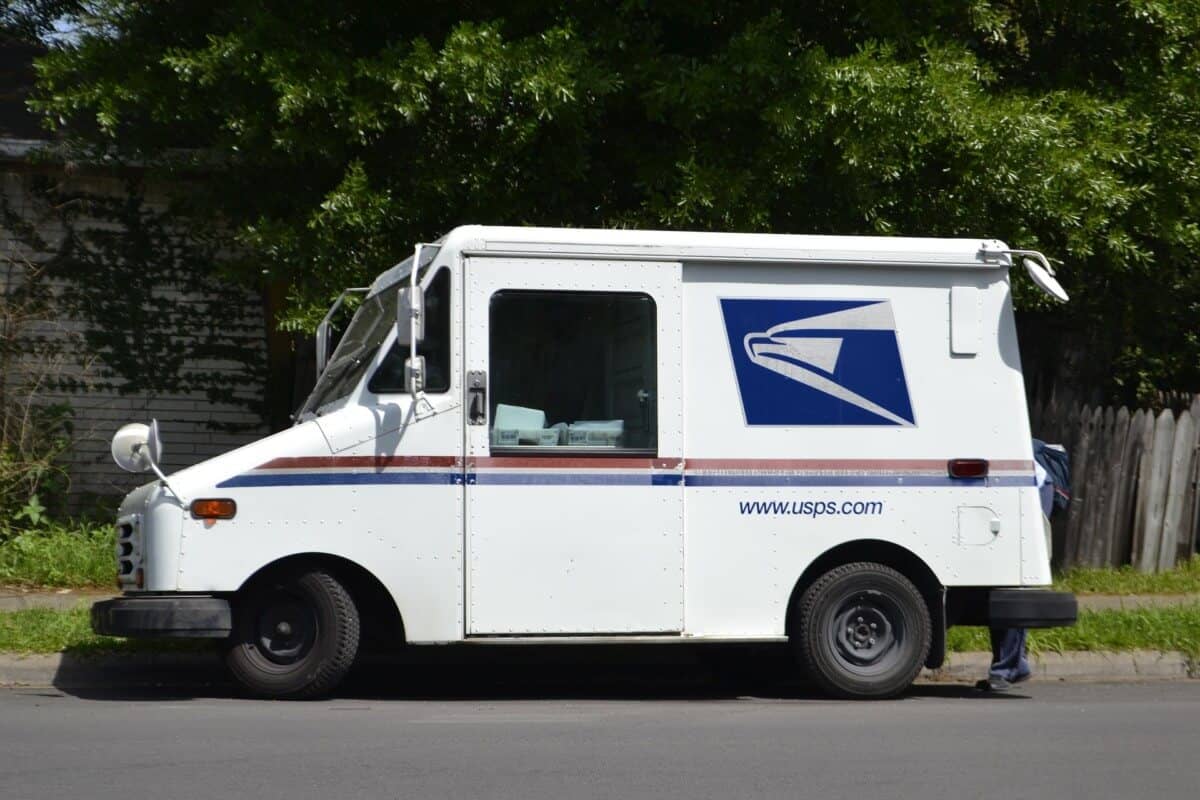A to Z claims were put in place on the Amazon marketplace to protect buyers. It’s an important part of their customer-centric approach. Having the ability to file A to Z claims with Amazon for purchases from third-party sellers puts buyers’ minds at ease. This way, Amazon can ensure customer satisfaction even for merchant-fulfilled orders.
A to Z claims were put in place on the Amazon marketplace to protect buyers. It’s an important part of their customer-centric approach. Having the ability to file A to Z claims with Amazon for purchases from third-party sellers puts buyers’ minds at ease. This way, Amazon can ensure customer satisfaction even for merchant-fulfilled orders.
The Amazon A to Z Guarantee
As the name suggests, A to Z claims cover order issues from start to finish. Amazon wants to make sure that it can offer the same quality to their customers even for items sold and fulfilled by third-party sellers on the platform. Amazon guarantees item condition and delivery speed, and buyers can file A to Z claims for any order that does not meet their expectations.
Once an A to Z claim is filed, Amazon reviews the reported problem and decides whether or not the customer should be issued a refund.
The following conditions apply:
– order is not digital items, payments for services, or stored value instruments (tokens carrying a credit balance)
– chargeback has not been filed with payment provider or bank
– order still not received three days after the maximum estimated delivery date or 30 days from the order date, whichever comes first
– tracking shows a delivery confirmation but order not received even if the above date has not passed
– item is materially different than expected, damaged or defective, and buyer contacted the seller for a return 48 hours previous without resolution
– item has been returned with tracking but the seller has not yet issued a refund
– customer returned item in line with Amazon’s policy but has not been refunded the correct amount
– customer was not satisfied with eligible services performed by seller
– seller has not provided a US return address, pre-paid return label, or offered a full refund without return for international returns
– customer has been charged over and above purchase and dispatch price, which seller did not cover
Buyers are encouraged to communicate with sellers before filing A to Z claims, which is why there is a 48-hour window before the guarantee can be applied. In any case, Amazon further protects buyers by allowing them up to 90 days after the maximum estimated delivery date to file A to Z claims.
If a buyer receives a refund from the seller before their A to Z claim is processed, they can cancel the request. Both buyers and sellers have a chance to appeal decisions on claims.
Handling A to Z Claims
Amazon third-party sellers are under a lot of pressure to maintain the marketplace’s very high standards for customer satisfaction. Managing to ship out orders on time and ensure that they arrive in good condition may sound simple enough. It can be tricky, however, in real life.
Timely Delivery
The reason why Amazon has invested so much effort into building up their logistics network is because existing solutions failed. It’s not just that Amazon has such high standards, but customers needed reliability in terms of delivery. They go to Amazon because they know that they can get an item delivered even the same day if needed.
Third-party sellers who want to stay in Amazon’s good graces must be able to meet the same expectations. Using their own fulfillment methods, which usually means one of the carriers that Amazon has already deemed unreliable, poses a problem. Sellers who accumulate A-to-z claims filed against them will end up with a poor account rating, which negatively affects their ability to sell. In some cases, accounts are suspended or even terminated.
To avoid facing A-to-z claims, third-party sellers must use careful planning:
Inventory Management – A good number of deliveries outside the estimated window are due to stockouts that cause fulfillment delays. Properly maintaining inventory levels can do away with this entirely.
- Backup Couriers – Deliveries can fail when couriers are backed up and cannot process deliveries fast enough. Having backup options to turn to immediately after an order or delivery date is rejected can ensure that deliveries can still be made on time.
- Delivery Windows – Sellers handling their own fulfillment must do the math and offer only delivery dates that they can realistically meet. This can greatly affect sales, but missing delivery estimates time and again can hurt the business even more. It’s a case of the lesser of to evils when a solution for faster delivery is not available.
- Monitor Deliveries – Sellers must keep track of all deliveries. Buyers are not required to report failed delivery before filing A to Z claims. To avoid claims, proactive measures must be taken to ensure timely delivery or at least communicate with buyers and offer solutions before they get upset.
Item Condition
Third-party sellers are responsible for making sure that items are received by customers undamaged. Amazon has a long list of acceptable packing materials and methods which answer this concern. The guidelines are there to ensure (as far as possible) that items do not get damaged in transit.
A lot depends on how responsible the specific carriers and couriers and warehouse workers who handle the items at the different stages are, however. It’s important that sellers pay attention to the arrangements they have for item delivery and storage.
- Wholesale Checks – Sellers must actively monitor the quality of the items they are receiving from manufacturers and suppliers. This involves source checks for defects as well as shipping and handling from source to seller. Quality checks at this early stage can prevent A to Z claims at the source.
- Warehouse Checks – Sellers must also have adequate quality control procedures in place at their own warehouses. Storage, picking and packing must me done in accordance with strict guidelines to ensure that items are not damaged in storage or in transit to customers due to poor packaging.
A to Z Claims for Sellers Using FBA
A to Z claims are easier to handle for sellers using FBA.
Delivery Issues
Sellers using FBA don’t have to worry too much about timely delivery since Amazon takes immediate responsibility for fulfillment issues. The customer can simply be directed to contact Amazon for resolution. Any negative feedback left about fulfillment can also be swiftly removed.
Item Damage
Items damaged in transit will be reimbursed by Amazon – if the seller can obtain proof that the damage occurred between the Amazon warehouse and the customer. Usually this proof that Amazon requires means pictures of the damage to the shipping box and the item, which must include the shipping label and item label with the barcode to prove that it is the item that was shipped from an Amazon warehouse.
Proof of damage is not always easy to obtain since some buyers discard damaged items in frustration before filing A to Z claims. Others are simply not willing to go through the trouble of taking pictures to get a refund. They trust in Amazon’s system and know the power that their feedback and reviews have over sellers.
The same does not apply for defective items or items where the damage cannot be proven to be the result of either improper handling at Amazon warehouses or during last mile transport. Many times, this is the case when the damage is not clearly visible.
Here’s what sellers can do in these cases:
- Have SOPs – Sellers need to develop specific procedures for handling issues relating to item defects and damage. This begins with knowing what Amazon’s responsibility is versus the seller’s responsibility to facilitate quicker resolution. Set procedures also makes communication with buyers smoother. Altogether, it improves customer experience and reduces the chances of A to Z claims.
- Monitor Messages – Sellers should closely monitor customer messages in any case so that they can maintain a good rating for fast responses to queries. When a complaint comes in, sellers must show vigilance by responding immediately with a desire to resolve the issue, ideally with a solution at hand. As long as you are engaged in a useful conversation with a buyer, they will not usually resort to filing a claim.
Fraudulent Returns
Amazon customers know that they are basically the boss on the marketplace. Some tend to take advantage of their power over sellers. They know that Amazon usually takes their side and will do almost anything to ensure their satisfaction. This leads to shoppers who try to game the system by ordering items to use them for a short period with the intention of returning them within the policy window claiming defects or damage to get a refund.
This can be a huge problem for those selling items with higher shipping fees or otherwise more difficult returns. In these cases, it’s vital that the return policy be communicated upfront and very clearly to buyers before orders ship out. Listing notes and automated messaging works for this, with a disclaimer that non-receipt or failure to acknowledge the policy does not invalidate it.
Final Thoughts
A to Z claims can be a real headache for third-party sellers on Amazon. Customers are confident that the marketplace favors them. Appeals against these claims are being rejected more often now than in the past. And most sellers aren’t aware of their impact or the smaller factors that affect Amazon’s decision:
– Sellers don’t get protection unless they ship on time and use the “Buy Shipping labels” option.
– Tracking information must be uploaded to Amazon before a claim is filed.
– Delivery must have been completed before the maximum estimated date of delivery or the 30-day deadline lapses.
– Claims for packages proven by tracking information to be lost in transit are automatically approved and sellers must file for refunds from the carrier, not Amazon.
– Claims for packages tracked as delivered but claimed by buyers as lost or stolen are approved unless it can be proven that the buyer is a fraudster or has abused the A to Z guarantee.
– Sellers must have signature confirmation for deliveries on top of tracking information or claims will be granted to buyers by default. (Pre-signature excluded – buyer still wins the claim.)
It’s not easy for sellers to get A to Z claims thrown out. It’s much better to take steps to avoid them. Be pro-active in protecting yourself from the damage that these claims can do to your business by improving your processes and being vigilant.



 Inventory Management – A good number of deliveries outside the estimated window are due to stockouts that cause fulfillment delays. Properly maintaining inventory levels can do away with this entirely.
Inventory Management – A good number of deliveries outside the estimated window are due to stockouts that cause fulfillment delays. Properly maintaining inventory levels can do away with this entirely.




